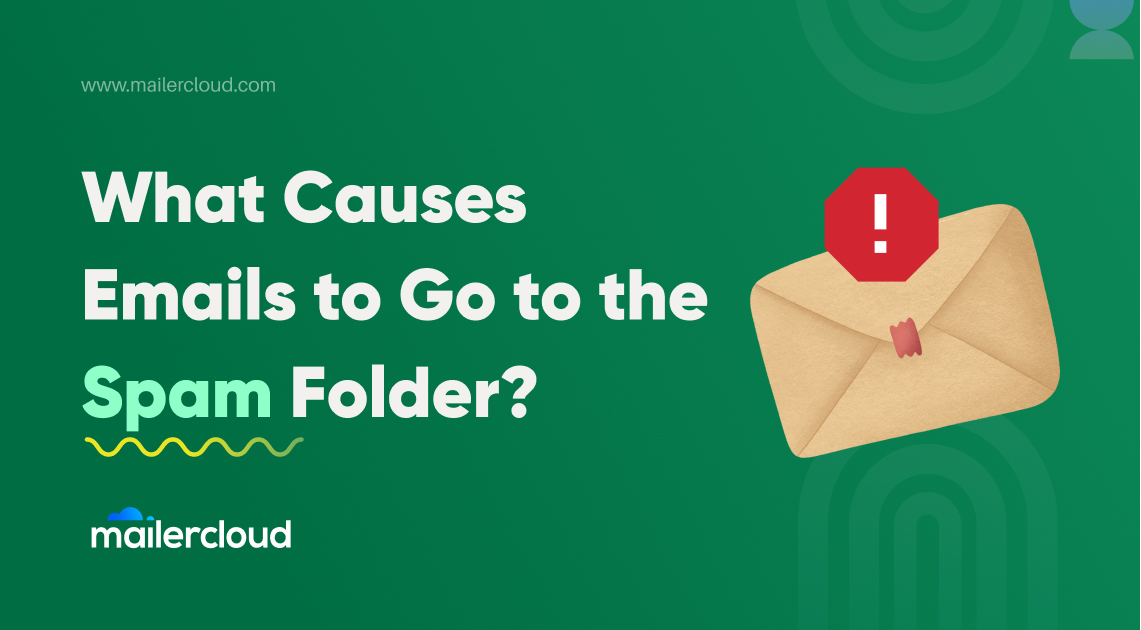This article dives into the common reasons your emails might be landing into the spam folder instead of reaching the inbox. Understanding these pitfalls will help you improve your email deliverability, ensuring that your messages reach their intended recipients. It’s worth reading as it offers valuable insights for anyone looking to optimize their email marketing strategies.
The majority of emails filtered as spam are, in fact, spam. As per Statista, more than 50% of the emails sent are spam. Such huge amounts of spam emails will surely irritate the recipients if they had to manually scan and filter them. Therefore, ISPs and ESPs set up filters to automatically remove spam emails before they land into the inbox.
Talking about the other side of the picture, roughly 1 in every 6 emails goes to the spam box or the recipient’s inbox blocks it. This is around 83%. Now you would wonder that 83% inbox delivery rate is acceptable. But, would you be content if you only made 83% of your earning potential?
You’re losing potential chances to earn revenue or acquire new leads that could have been made if your emails had arrived in your clients’ inboxes. Hence, you should pay close attention to why emails land up in spam folders.
Here are some main reasons and poor email marketing practises that may route your emails to the spam box.
Table of Contents
Understanding the Spam Filter
Spam filters are software programs designed to identify and segregate unsolicited or dangerous emails, sending them straight to the spam folder. Every time you send an email, it must go through these filters before it can land in the recipient’s inbox. The spam filter scrutinizes the email’s content, subject line, sender’s reputation, and various other factors to determine if it’s legitimate or spam.
The Role of Email Authentication in Email Deliverability
Email authentication plays a critical role in ensuring that your emails don’t end up in the spam folder. Email authentication standards such as SPF, DKIM, and DMARC verify that the email comes from a legitimate source. If these standards are not met, the email is flagged as suspicious by the spam filter and may end up in the recipient’s spam folder.
Common Reasons Why Emails Go to the Spam Folder
There are several reasons why emails might end up in the spam folder. These include lack of email authentication, a high spam complaint rate, and poor engagement rates on your emails. Additionally, if you’re sending emails to people who haven’t opted into your email list, this could trigger spam filters. Using too many spam trigger words in your email content can also alert spam filters.
here are some common reasons why emails often end up in the spam folder:
-
Lack of Email Authentication: Without proper SPF, DKIM, and DMARC records, your emails may be flagged as potentially harmful or spam.
-
High Spam Complaint Rates: If many recipients mark your emails as spam, it can hurt your sender reputation leading to more emails going to the spam folder.
-
Poor Engagement Rates: If your emails are not opened or clicked on, spam filters might assume they’re not wanted or relevant, sending them to the spam folder.
-
Sending Emails to Non-opted Users: Sending emails to recipients who haven’t opted in can trigger spam filters.
-
Frequent Use of Spam Trigger Words: Overuse of typical “spammy” words or phrases in your email content can alert spam filters.
-
Poor Sender Reputation: If your email sending domain or IP has a history of sending spam, your emails are more likely to end up in the spam folder.
-
Email List Quality: If your email list contains many old or non-functional email addresses, it can lead to a high bounce rate, which can trigger the spam filters.
-
Incorrect Formatting: Emails that are poorly formatted or contain many spelling and grammar errors can be flagged as spam.
-
Overly Promotional Content: Emails that are overly salesy or promotional in nature are often sent to the spam folder.
-
Lack of Personalization: Generic, non-personalized emails are more likely to be identified as spam.
-
Unbalanced Text-to-Image Ratio: Emails with little text and a lot of images raise red flags for spam filters.
-
No Unsubscribe Link: All marketing emails should have a clear and accessible unsubscribe link. Lack of one can land the email in the spam folder.
-
Inconsistent Emailing Frequency: Sending too many emails in a short period or at irregular intervals can alert spam filters.
The Impact of Spam Trigger Words on Email Delivery
Spam trigger words are certain terms or phrases that, when included in your email content, can trigger spam filters. These words often signal salesy or promotional content that might be classified as spam by users or spam filters. Therefore, it is essential to avoid using these words to ensure that your emails land in the recipient’s inbox.
How Do Spam Filters Work?
Spam filters use complex algorithms to analyze every email sent to an email account. These algorithms consider various factors like the sender’s reputation, email content, and user’s previous interactions with the sender. If an email fails these checks, it might end up in the spam folder.
How to Ensure Your Emails Land in the Inbox
To ensure that your emails land in the recipient’s inbox and not their spam folder, you need to follow best email marketing practices. This includes sending emails to people who have opted into your list, avoiding spam trigger words, and ensuring that your email service provider has a good reputation. Moreover, it’s crucial to keep your emails engaging to encourage recipients to open and interact with them.
What Happens When Emails are Marked as Spam?
When a recipient marks your email as spam, it negatively impacts your sender’s reputation. This can lead to your future emails being flagged as spam by default, affecting your email deliverability. Therefore, it is important to ensure that your emails provide value and are relevant to the recipients to avoid being marked as spam.
Importance of a Clean Email List for Avoiding the Spam Folder
Maintaining a clean email list is crucial for avoiding the spam folder. This involves removing inactive subscribers and those who have marked your emails as spam. Sending emails to these addresses can harm your sender’s reputation and trigger spam filters.
The Role of Content in Email Deliverability
The content of the email plays a significant role in whether it ends up in the inbox or the spam folder. Spam filters scrutinize the content for any signs of spammy behavior. Ensuring that your content is relevant, valuable, and not overly promotional can help in avoiding the spam folder.
The Role of Email Service Providers in Avoiding Spam Issues
Your choice of email service provider can significantly impact whether your emails land in the inbox or are sent to spam. Providers with robust infrastructure and good reputations are less likely to have their emails flagged as spam. Therefore, it’s important to choose an ESP that prioritizes deliverability.
Key Takeaways
- Understand how spam filters work.
- Authenticate your emails.
- Avoid using spam trigger words.
- Keep your email list clean.
- Ensure your content is relevant and valuable.
- Choose a reputable email service provider.
- Encourage recipients to engage with your emails.
- Respect the opt-in process.
- Maintain a healthy sender’s reputation.
































